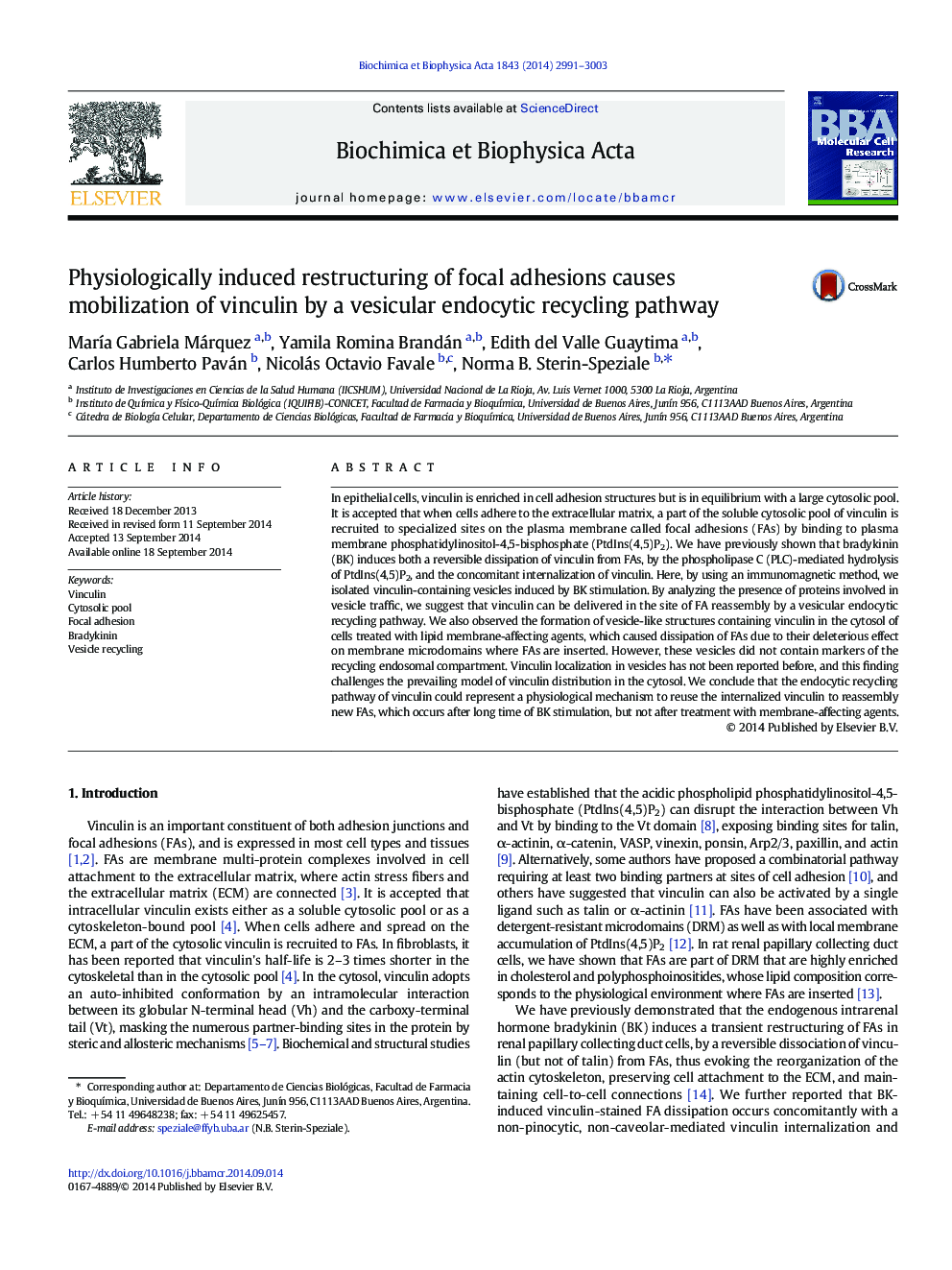| Article ID | Journal | Published Year | Pages | File Type |
|---|---|---|---|---|
| 8303809 | Biochimica et Biophysica Acta (BBA) - Molecular Cell Research | 2014 | 13 Pages |
Abstract
In epithelial cells, vinculin is enriched in cell adhesion structures but is in equilibrium with a large cytosolic pool. It is accepted that when cells adhere to the extracellular matrix, a part of the soluble cytosolic pool of vinculin is recruited to specialized sites on the plasma membrane called focal adhesions (FAs) by binding to plasma membrane phosphatidylinositol-4,5-bisphosphate (PtdIns(4,5)P2). We have previously shown that bradykinin (BK) induces both a reversible dissipation of vinculin from FAs, by the phospholipase C (PLC)-mediated hydrolysis of PtdIns(4,5)P2, and the concomitant internalization of vinculin. Here, by using an immunomagnetic method, we isolated vinculin-containing vesicles induced by BK stimulation. By analyzing the presence of proteins involved in vesicle traffic, we suggest that vinculin can be delivered in the site of FA reassembly by a vesicular endocytic recycling pathway. We also observed the formation of vesicle-like structures containing vinculin in the cytosol of cells treated with lipid membrane-affecting agents, which caused dissipation of FAs due to their deleterious effect on membrane microdomains where FAs are inserted. However, these vesicles did not contain markers of the recycling endosomal compartment. Vinculin localization in vesicles has not been reported before, and this finding challenges the prevailing model of vinculin distribution in the cytosol. We conclude that the endocytic recycling pathway of vinculin could represent a physiological mechanism to reuse the internalized vinculin to reassembly new FAs, which occurs after long time of BK stimulation, but not after treatment with membrane-affecting agents.
Related Topics
Life Sciences
Biochemistry, Genetics and Molecular Biology
Biochemistry
Authors
MarÃa Gabriela Márquez, Yamila Romina Brandán, Edith del Valle Guaytima, Carlos Humberto Paván, Nicolás Octavio Favale, Norma B. Sterin-Speziale,
